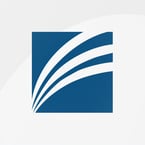Even “fee-free” accounts can cost you. Learn how to spot common charges before they shrink your savings.
You opened an online savings account for better interest, fewer fees, and more flexibility. But many banks still tuck away charges in the fine print. These hidden bank fees can quietly chip away at your balance, especially when you're not actively watching.
From monthly maintenance charges to fees for transferring your own money, small costs add up. This guide will walk you through the most common online savings account fees, how to calculate their impact, and what to look for when choosing a truly fee-free savings account.
To see how fees compare across online banks, check our Best Online Savings Accounts Guide.
Common Hidden Fees
Most online savings accounts advertise themselves as low-fee or no-fee. But take a closer look, and you may find:
- Monthly Maintenance Fees – A flat charge just to keep the account open, often $5 to $15.
- Excess Withdrawal Fees – Some banks limit how many times you can move money out each month. Go over the cap, and you could pay $10 or more per extra transaction.
- ACH Transfer Fees – Standard bank-to-bank transfers are usually free, but same-day or expedited ACH transfers may come with a price tag.
- Paper Statement Fees – If you request mailed copies, expect to pay $2–$5 per statement.
- Dormancy or Inactivity Fees – If you don’t touch the account for a while, some banks penalize you.
These charges aren’t always easy to find. You might need to read the fine print in the disclosures section or hunt through the fee schedule PDF.
How Fees Erode Real Return
Even small fees can undo the benefit of a high-yield account. Let’s break it down:
Say you have $3,000 saved and your bank charges a $10 excess withdrawal fee when you transfer funds a seventh time in a month. That one charge alone can offset weeks’ worth of earned interest.
Or consider a monthly maintenance fee of $5. Over a year, that’s $60 – enough to cancel out much of your yield if you’re saving a modest balance.
These hidden costs make your real return lower than expected, even when the APY looks appealing on paper. For a full breakdown of how to evaluate your earnings, check Choosing the Best Online Bank: What Matters Beyond the Rate.
Spot-and-Avoid Checklist
Use this quick checklist when reviewing an online savings account:
- Read the Fee Schedule – Search for terms like “withdrawal limit,” “inactivity,” or “statement options.”
- Call or Chat with Support – Ask directly about lesser-known fees or cutoff times. Interacting with support before opening an account can help preview the level of service you can expect as a client.
- Watch for Teaser Rates with Fee Triggers – Some banks drop the rate or add fees if your balance dips below a threshold.
- Set Alerts – Many banks let you set up activity alerts so you don’t accidentally exceed limits.
- Review Quarterly – Re-check your statements every few months to catch unexpected charges.
Decision Flow-Chart
Choosing the right account means knowing your habits. Here’s how to think it through:
Do you plan to withdraw from savings more than 6x per month?
- Yes? Avoid accounts with excess withdrawal fees.
- No? Focus on those with better transfer access.
Will you ever need same-day transfers?
- Yes? Choose banks with free or low-cost same-day ACH options.
Do you prefer printed statements or expect to leave the account untouched for months?
- Yes? Watch for paper statement or dormancy fees.
Do you keep a lower balance?
- Yes? Maintenance fees could take a big bite – opt for truly fee-free savings.
Wrapping Up
Not all online savings accounts are created equal. Even accounts with great rates can chip away at your balance with hidden fees. Understanding how these charges work – and how to avoid them – helps you keep more of what you earn.
Use our checklist to spot red flags early and stay in control of your savings.
Check out our Online Savings account to see how it stacks up. No maintenance charges, no ACH fees, and easy-to-find FAQs and fee information.
FAQs
Are online savings accounts ever really fee-free?
Yes, but they’re not all the same. Look for accounts that clearly list $0 fees across maintenance, withdrawals, and transfers.
What is an excess withdrawal fee?
It’s a charge applied when you exceed your bank’s limit on outbound transfers in a month, often six per cycle.
Why do banks charge ACH fees?
Most standard transfers are free, but some banks charge for same-day or expedited service to cover processing costs.
What happens if I leave my account inactive?
Some banks charge a dormancy fee after months without activity. Read the terms to know what “inactive” means for them.
How can I avoid paying bank fees?
Choose a truly fee-free savings account, set alerts, review terms regularly, and know how often you move your money.
For a complete look at what to compare beyond just APY, check out our 2025 guide to the best online savings accounts. It covers fees, access speed, app quality, FDIC coverage, and more.



